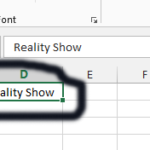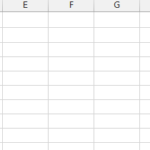How to Insert Page Breaks in Excel
Inserting page breaks in Excel allows you to control exactly where a new page begins when printing your document. This is particularly useful for organizing large datasets or reports into readable segments. Here’s how to manually insert, move, and remove page breaks in Excel:
To Insert a Page Break:
Click on the cell where you want to start a new page. The page break will be inserted above and to the left of the selected cell. For example, if you select cell B5, the new page will start at B5, meaning B5 will be the first cell at the top left of the new page.
Go to the Page Layout tab on the Ribbon. In the Page Setup group, click on Breaks. From the dropdown menu, select Insert Page Break. Excel will insert a horizontal and vertical page break, starting a new page both to the right and below your selected cell.
To Move a Page Break:
In Page Break Preview mode (accessible from the View tab > Workbook Views group > Page Break Preview), you can see the existing page breaks as dashed lines. Click and drag these lines to a new position to move the page break. This action adjusts where the new page will start.
To Remove a Page Break:
Navigate to the cell immediately below or to the right of the page break you want to remove. Go back to the Page Layout tab, click Breaks, and select Remove Page Break.
To clear all manual page breaks you’ve added, go to the Page Layout tab, click Breaks, and choose Reset All Page Breaks. This will not remove breaks that Excel has automatically inserted.
Additional Tips:
- Excel automatically inserts page breaks based on your print settings (such as paper size and margins). Manual page breaks that you insert override Excel’s automatic breaks.
- Sometimes, adjusting the print area (from the Page Layout tab > Page Setup group > Print Area) can be a simpler way to control what content appears on each page without manually inserting page breaks.




Leave a Reply